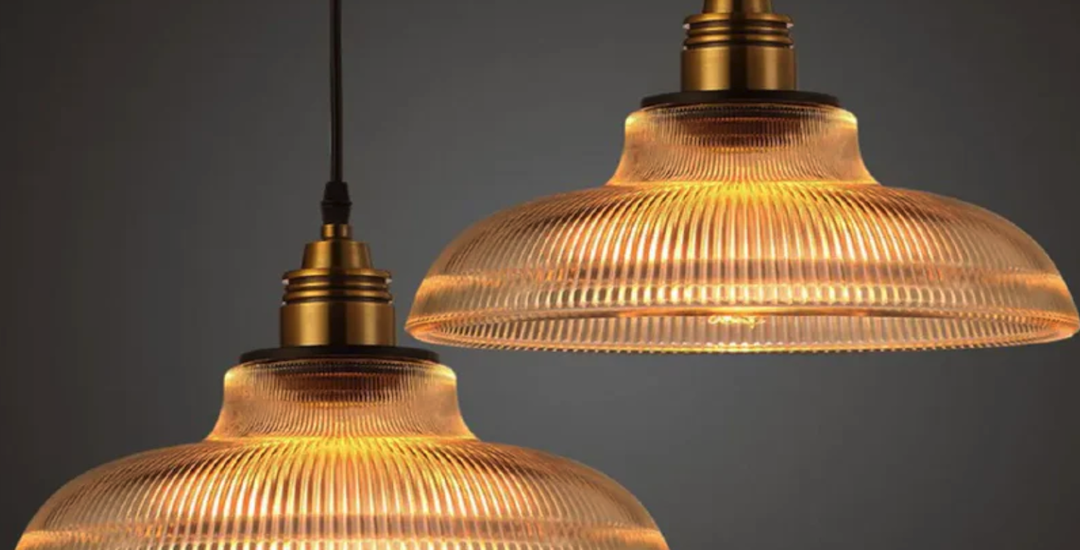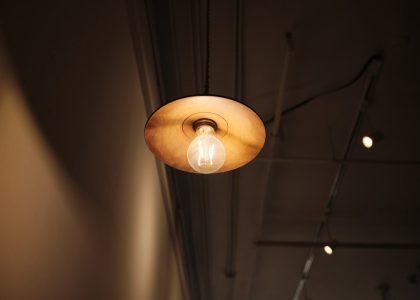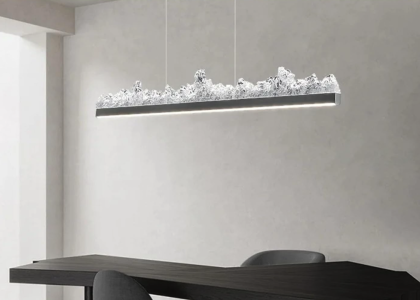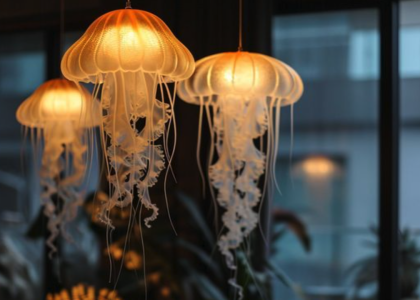The evolution of retro glass ceiling lamps is a fascinating journey that intertwines art, technology, and social change. Originating in the late 19th century, these lamps emerged during a period marked by rapid industrialization and the advent of electric lighting. The transition from gas to electric light not only revolutionized how spaces were illuminated but also inspired designers to experiment with new materials and forms.
The Art Nouveau movement, which flourished from the 1890s to the early 1900s, played a pivotal role in shaping the aesthetic of glass ceiling lamps Misls. Designers like Louis Comfort Tiffany and Emile Gallé began to explore the use of stained glass, creating intricate designs that celebrated nature and organic forms. These early innovations laid the groundwork for what would become a beloved style in home lighting.
As the decades progressed, the mid-20th century saw a surge in popularity for retro glass ceiling lamps, particularly during the 1950s and 1960s. This era was characterized by a fascination with modernism and a desire to break away from traditional design constraints. The introduction of new manufacturing techniques allowed for more diverse shapes and colors, leading to the creation of iconic pieces that are now considered classics.
Designers like George Nelson and Isamu Noguchi contributed to this movement, producing lamps that were not only functional but also sculptural in nature. The playful use of color and form during this time reflected the optimism of post-war society, making retro glass ceiling lamps a symbol of modern living.
Characteristics of Vintage Charm: Retro Glass Ceiling Lamps
Retro glass ceiling lamps are distinguished by their unique blend of craftsmanship and artistic expression. One of the most notable characteristics is the use of colored and textured glass, which can transform the quality of light in a room. The interplay between light and glass creates a warm, inviting atmosphere that is often sought after in home décor.
Many vintage pieces feature intricate patterns or hand-blown elements, showcasing the skill of artisans who dedicated their craft to creating one-of-a-kind fixtures. This attention to detail not only enhances the aesthetic appeal but also adds a layer of history and authenticity to each lamp. Another defining feature of retro glass ceiling lamps is their diverse range of styles, which can cater to various tastes and interior design themes.
From the sleek lines of mid-century modern designs to the ornate details found in Art Deco pieces, there is a retro glass ceiling lamp to suit every preference. The use of geometric shapes and bold colors in many mid-century designs reflects the cultural shifts of the time, while more elaborate designs often evoke a sense of nostalgia for earlier artistic movements. This versatility allows homeowners to incorporate these lamps into different settings, whether they are aiming for a chic modern look or a cozy vintage vibe.
How to Incorporate Retro Glass Ceiling Lamps into Your Home Décor
Incorporating retro glass ceiling lamps into your home décor can be an exciting endeavor that enhances both functionality and style. One effective approach is to consider the overall theme of your space. For instance, if you have a mid-century modern living room, a pendant lamp with clean lines and vibrant colors can serve as a striking focal point.
Placing such a lamp above a minimalist dining table can create an inviting atmosphere for gatherings while simultaneously paying homage to the design principles of the era. Another way to integrate these lamps is by mixing them with contemporary elements. A retro glass ceiling lamp can provide an unexpected contrast when paired with modern furniture or artwork.
For example, a vintage-inspired fixture with soft curves can soften the sharp angles of contemporary design, creating a harmonious balance within the space. Additionally, using multiple lamps in different areas can create a cohesive look throughout your home while allowing each room to maintain its unique character. Layering lighting sources—such as combining ceiling lamps with floor lamps or wall sconces—can further enhance the ambiance and functionality of your living spaces.
Where to Find Authentic Retro Glass Ceiling Lamps
Finding authentic retro glass ceiling lamps requires a bit of exploration and an eye for quality craftsmanship. Antique shops and vintage boutiques are excellent starting points for discovering unique pieces that carry historical significance. These establishments often curate collections that reflect various design eras, allowing you to find lamps that resonate with your personal style.
Additionally, attending estate sales or auctions can yield hidden gems, as many homeowners part with cherished items that may no longer fit their current décor. Online marketplaces have also become increasingly popular for sourcing retro glass ceiling lamps. Websites like eBay, Etsy, and specialized vintage lighting retailers offer a vast selection of options from around the world.
When shopping online, it’s essential to verify the authenticity of the item by checking seller reviews and asking for detailed photographs or descriptions. Furthermore, social media platforms like Instagram have given rise to vintage sellers who showcase their collections, making it easier than ever to connect with reputable sources. By exploring both local and online avenues, you can curate a collection of authentic retro glass ceiling lamps that reflect your individual taste.
Tips for Caring for and Maintaining Retro Glass Ceiling Lamps
Caring for retro glass ceiling lamps is crucial to preserving their beauty and functionality over time. Regular cleaning is essential, as dust and grime can accumulate on both the glass and metal components. To clean these fixtures safely, it’s advisable to use a soft microfiber cloth dampened with warm water or a gentle glass cleaner.
Avoid using abrasive materials that could scratch or damage the surface. For intricate designs or textured glass, a soft-bristle brush can help reach crevices without causing harm. In addition to cleaning, it’s important to check the electrical components periodically to ensure safety and performance.
Inspecting the wiring for any signs of wear or damage can prevent potential hazards. If you notice any issues, it’s best to consult a professional electrician who specializes in vintage lighting restoration. Furthermore, when replacing bulbs, opt for LED options that mimic the warm glow of traditional incandescent bulbs while being energy-efficient.
This not only extends the life of your lamp but also maintains its vintage charm without compromising on functionality.
The Timeless Appeal of Retro Glass Ceiling Lamps
The enduring allure of retro glass ceiling lamps lies in their ability to evoke nostalgia while remaining relevant in contemporary design contexts. These fixtures serve as tangible connections to past eras, reminding us of the artistry and innovation that defined those times. Their unique designs often spark conversations and serve as focal points within a room, making them more than just functional lighting; they become integral elements of home storytelling.
Moreover, retro glass ceiling lamps possess an inherent versatility that allows them to adapt to various design trends over time. As interior styles evolve, these lamps can seamlessly transition from one aesthetic to another without losing their charm. Whether placed in a modern loft or a traditional home, they add character and warmth that transcends fleeting trends.
This timeless appeal ensures that retro glass ceiling lamps will continue to be cherished by generations to come.
Design Inspiration: Using Retro Glass Ceiling Lamps in Different Rooms
When considering how to use retro glass ceiling lamps in various rooms, it’s essential to think about both function and aesthetics. In dining areas, for instance, a large pendant lamp with colorful stained glass can create an inviting atmosphere for family meals or entertaining guests. Hanging it at an appropriate height ensures that it provides ample light while allowing unobstructed views across the table.
In living rooms, retro glass ceiling lamps can serve as statement pieces that enhance existing décor. A mid-century modern fixture with geometric shapes can complement sleek furniture lines while adding visual interest overhead. Alternatively, in bedrooms, softer designs with frosted or etched glass can create a calming ambiance conducive to relaxation.
By thoughtfully selecting lamps that align with each room’s purpose and style, homeowners can elevate their spaces while celebrating the beauty of retro design.
Modern Interpretations of Retro Glass Ceiling Lamps
The resurgence of interest in vintage aesthetics has led contemporary designers to reinterpret retro glass ceiling lamps through innovative approaches. Modern interpretations often blend traditional craftsmanship with cutting-edge technology, resulting in fixtures that honor classic designs while incorporating contemporary materials and energy-efficient lighting solutions. For example, some designers are experimenting with LED technology within vintage-inspired shapes, allowing for greater flexibility in light output while maintaining the nostalgic appeal.
Additionally, contemporary designers are exploring new forms and finishes that push the boundaries of traditional retro styles. This includes incorporating mixed materials such as metal and wood alongside glass elements or introducing bold color palettes that reflect current design trends. These modern interpretations not only pay homage to the past but also invite new generations to appreciate the charm and functionality of retro glass ceiling lamps in their homes today.
By bridging the gap between old and new, these designs ensure that the legacy of retro lighting continues to shine brightly in contemporary interiors.





